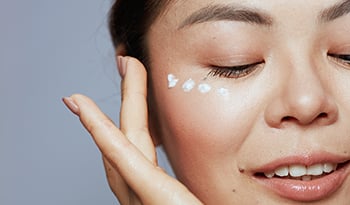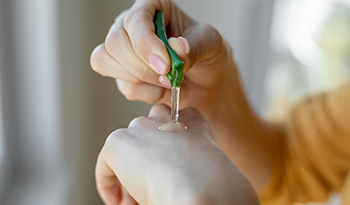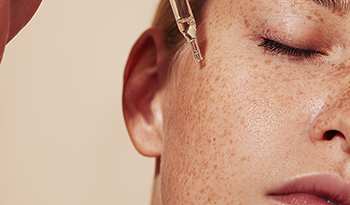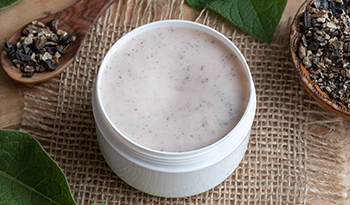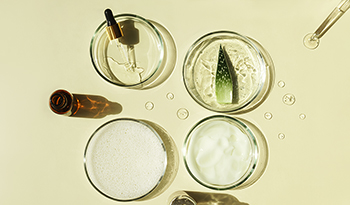Centella Asiatica: Popüler Cilt Bakımı Bileşenleri

Centella asiaticaçok popüler ve dikkat ediyorsanız, bu bitkisel bitkisel ürün serisi yeni cilt bakım ürünlerinde görünen fark etmiş olabilirsiniz.
Centella Asyatica Nedir?
Gotu kola, pennywort, Brahmi ve kaplan olarak bilinen Centella asiatica, geleneksel bitkisel ilaç ve mutfak amaçları için yıllardır kullanılan bir bitkidir. The plant, other regions and the region of Güneydoğu Asya, Güney Afrika, Madagaskar ve hatta Güneydoğu Amerika Birleşik Devletleri'nin ılıman, ıslak bölgeleri yetişir. Karotenoidler, C ve B vitaminleri kompleksi ve sağlık yararları, zengin yapraklı yeşil bir sebze, Sri Lanka, Malezya, Endonezya, Tayland ve Hindistan da dahil olmak üzere birçok ülkede yulaf, salata ve sağlıklı yaşam içecekleri tüketilir.
Centella Asiatica Neden Popüler?
Centella asiatica, anti-inflamatuar, antioksidan ve antimikrobiyal etkilere sahip bir dizi farklı sağlık durumu için görüntülenmiştir ve sonuç olarak Batılı uygulamalar arasında kullanımına ilgi vardır.
Özellikle cilt bakımı dünyasında, Centella asiatica, “cica kremleri” olarak adlandırılan nemlendiriciler sıklıkla görülür. “Cica” terimi, bu terimi Latince “cicatrix” kelimesinden türetilmiştir ve Centella asiatica, bu şekilde adlandırılan çalışmaların çoğalması için yaranın iyileşmesi ve kanser rolüne bağlı olarak adlandırılmıştır. Centella asiatica aslında uzun yıllardır cilt bakım ürünlerinde kullanılmaktadır, ancak Kore cilt bakımı (K-beauty) ürünlerinde popüler olduğu kadar büyük bir radar altında kalmıştır.
Centella asiatica bitkisindeki ana aktif “bileşenler” asiaticoside, madecasosside, asiatic asit ve madecassic asit gibi triterpenler. Here, bir ürünün bileşenleri arasında listelenen bilgilere ihtiyaç vardır. Centella asiatica özü birkaç tescilli gibi madecassolã, Blastoemullinaã ve Centellaseã gibi.
Cilt Nasıl Yapılır?
Antioksidanlar ve Antimikrobiyal Malzemeler
Centella asyalı bir bitki yapmanın ne kadar değerli olduğunu merak ediyor musunuz? Centella asiatica, antioksidan ve antimikrobiyal aktivite, anti-inflamatuar özellikler, gelişmiş yara iyileşmesi, gelişmiş skar oluşumu ve hatta üstün hidrasyon ve cilt bariyeri işlevi dahil olmak üzere cilt için bir dizi olası faydası dahil.
Yatıştırıcı ve Nemlendirici
Çoğu cilt bakım ürünü, cildi yatıştırmak ve nemlendirmek gibi cica kremlerine Centella asiatica dahildir. Cica kremlerinin değerlendirme yetenekleri hakkında çok fazla anekdot heyecanı var, bilimsel literatür bunu destekledi nispeten sınırlı veriler vardır. 25 kez randomize, çalışmayan bir çalışmada çalıştırılmayan, iç köşe kollarıCentella asiatica kremlerive farklı konsantrasyonlarda hidrojel preparatları uygulandı ve dört hafta boyunca dış ön kollara uygulandı (yani krem/hidrojel Centella asiatik içerir) karşılaştırıldı).
Study,Centella asiaticawith the therapy regions of skin, transepidermal su deficit (yani hidrasyon koruma yeteneği) ve oksidatif stres azalması (yani inflamasyon hasarı) istatistiksel olarak anlamlı iyileşme gösterdi.
Bu bulguların Centella asiatica konsantrasyonuyla vurgulanması cesaret verilmiştir, ancak dış kollerin iç ön kollarının derileri doğal olarak farklı özelliklere sahip olabilir, bu nedenle her ikisi arasında karşılaştırma yapmak kusursuz olmayabilir. 20 kez, değerlendiriciler başka bir çalışma yürütüyor, Centella asiatica cilt hidrasyonu ve bariyer fonksiyonunun iyileşmesi gösterdikten sonra kullanıldı. Bununla birlikte, en iyi bilinen nemlendiriciler olan hyaluronik asit ve gliserin içeren bir sıvı uygulandı, bu nedenle, Centella asiatica'dan diğer bileşenlere bağlı olarak görülen faydanın bilinmesi zor.
Kolajen Üretimi Artırır
Bir başka bulgu, Centella asiatica, artan kollajen üretimi, artan yağ gücü ve iyileştirilmiş iyileşme yetenekleri göstermek için çok sayıda çalışanı olan Centella asiatica. Bunların çoğu laboratuvar ve hayvan modellerinde gerçekleşti, ancak insanlarda birkaç tane ve hatta birkaç klinik çalışma vardır. Örneğin, bir klinik çalışma, Madecassolé, sklerodermal bozukluğu hastalarında, bir klinik çalışma, bir Rus hastalığına yakalandığını gösterdi ve iyileşme yarısı (yani iyileşme yararı daha hızlı). Ayrıca, pigmentasyon iyileşmesi, keloidlerin ve hipertrofik skarların önlenmesinin sırrı, human studies da. Centella asiatica'nın kolajına ve iyileşmesine dayanarak, neden kırılgan ve yaşlanma görünümünü oluşturan, Centella asiatica'nın kolajını kaybettiği zaman, bir yandan da faydayı nasıl görülebilir.
Centella Asiatica Çin Özel Evleri
Tüm bitkisel bazlı bitkisel ürünler, örneğin, ürün uygun şekilde formüle edilmek (yani tahriş ve alerjik reaksiyon, neden bazı bitkilerin kısımlarını çıkartabilir) cilt reaksiyonu riski vardır. Dermatology of the human natural product plant component of the red,, skin (contact dermatitis) is not found, the human natural product plant component of the natural product, which is not to see the white, skin (contact dermatitis) with the natural product of the human products of the natural product. Güvenilir cilt bakımı markalarının çoğu bu konuda düşünülür ve formüle edilen ürünlerini çok iyi çalışır, böylece problemler daha az olur. Bununla birlikte, her zaman gerçekleşen şans vardır, bu nedenle, insanların kendi “yama testinizi” yapmak için bir iyi fikir, bu nedenle cilt reaksiyonlarına karşı bir insan için bir “yama testinizi” yapmak için iyi bir fikir. Daha geniş bir alana sahip olmadan önce, birkaç hafta önce, bir alana için bir ürün geliştirilmiş olduğundan emin olmak için reaksiyon almazsa olmaz.
Bu notta, bir dermatoloğun bakış açısından, Centella asiatica ve Neomisin kombinasyonu ile yapılan tescilli formülasyonlarından (Madecassolã ve Blastoemulina) Centella asiatica ve neomisin kombinasyonu ile yapılan tescilli formülasyonu ile ilgili bir fayda var. Neomisin, reçetesiz satılan birçok yara kremi, son derece yaygın olan bir topikal antibiyotik, ancak dermatologlar için en büyük hayranı, bu nedenle dermatologlar için en büyük hayranı. İyi haber şu ki, bu formülasyonların hiçbir ticaricica kremlerininveya altında vurgulanmış ürünlerde kullanılmamaktadır, ancak başka bir durumla karşılaşmanız olası değildir.
Centella asiatica bitkisi hakkında bir diğer önemli şey, kereviz, incir, rezene, yaban havuzu, maydanoz ve dereotu gibi birçok harika yenilebilir bitkiyi içeren Apiaceae botanik ailesinden bahsedeceksiniz. Lezzetlerine göre, bu bitki ailesi, demenin süslü bir yolu olan fitofotodermatit, en yaygın nedenlerinden biri de bir cilt reaksiyonu olarak adlandırılan fitofotodermatit. Temel olarak, bitki cildinize bulur ve sonra güneş ışığına girerseniz, kahverengi renk değişikliğinin kabarma ve kızarıklığa dönüşmesine neden olabilir. Bununla birlikte, çoğu cilt bakım ürünü bitkine damıtılmış ekstraktlar kullanılır, bu nedenle bu işe yaramaz ve şu andacica kremleriile bildirilen bir sorun gibi görünmektedir. Öte yandan, Centella asiatica's sun and other inflamhaplar's neden of the red war was.
Özetlemek gerekirse, bu modaya uygun bitki bitkisel ilaçları, iltihapla savaşma, hidrasyon iyileştirme, cilt bariyerini güçlendirme ve iyileşme ve iyileştirme yaralarını cilt bakımı dünyasında dalgalar yaratıyor.
FERAGAT:SAĞLIK MERKEZİ tanı koymayı hedeflememektedir...
















































































 İçindekiler
İçindekiler




